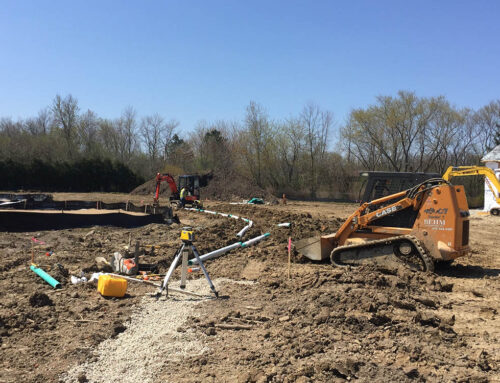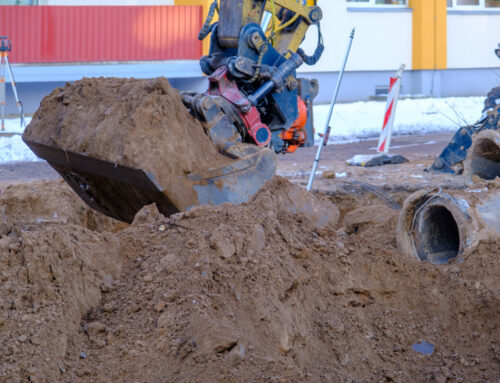Understanding The Impact Of Lead Service Lines On Drinking Water
Lead service lines are a significant concern for drinking water quality, as they can contribute to lead contamination and require inventory and removal according to the Lead Service Line Replacement and Notification Act.
Lead service lines are underground water pipes that connect homes or buildings to a source of drinking water. These water service lines are jointly owned by water supplies and property owners.
In Illinois, community water supplies are required to submit annual service line material inventories to the Illinois Environmental Protection Agency (IEPA). In 2019, Illinois reported 677,359 known lead service lines connected to water systems.
The Lead Service Line Replacement and Notification Act mandates that water supplies inventory and remove lead service lines. Additionally, the Act requires notifications to owners and occupants regarding lead service lines and construction activities that may release lead.
These government regulations aim to address the potential health risks associated with lead service lines and ensure the provision of safe drinking water.
The Lead Service Line Replacement and Notification Act, Public Act 102-0613, was signed into law on August 27, 2021, and became effective on January 1, 2022
- The Lead Service Line Replacement and Notification Act (Public Act 102-0613), prohibits partial lead service line replacements, except in certain circumstances, because partial replacements can increase lead levels for long periods of time
- The Illinois Plumbing Code Section 890.1150 includes requirements to provide physical separation between water service lines and sanitary sewers, building sewers, and building drains
- The only long-term solution to protect public health is to remove lead pipes and replace them with new copper pipes
- Lead is a toxic metal that is especially dangerous to young developing brains
- When plumbing pipes and fixtures containing lead corrode, the lead can dissolve or flake into the water that flows from our faucets
- You can’t see, smell, or taste lead, so even water that runs clear can contain it
Contamination Risks
The presence of certain materials in underground water pipes connecting homes to a source of drinking water raises concerns about potential contamination risks and the need for comprehensive assessments.
Lead service lines, in particular, pose a significant health risk due to the potential for lead contamination in drinking water. Studies have shown that lead exposure can result in various health effects, especially in children, including developmental delays, lowered IQ levels, and damage to the nervous system.
To address this issue, testing methods have been developed to detect lead levels in drinking water. These methods typically involve taking samples from taps and analyzing them for lead content.
It is crucial for water suppliers and property owners to prioritize regular testing to ensure the safety of drinking water and to identify the need for lead service line replacement.
Replacement and Safety Measures
Replacement and safety measures can be implemented to mitigate the health risks associated with lead contamination in the distribution of potable water. These measures include:
- Full lead service line replacement: Complete removal and replacement of lead service lines is the most effective method to reduce lead levels in drinking water. This ensures that no lead is present in the pipes that deliver water to homes or buildings.
- Safety precautions during replacement: During the replacement process, safety precautions should be taken to minimize exposure to lead. This includes using proper personal protective equipment, following safe work practices, and disposing of lead-containing materials properly.
- Regular monitoring and testing: After lead service line replacement, regular monitoring and testing of water samples should be conducted to ensure that lead levels remain below the actionable level. This helps to ensure the ongoing safety and quality of the drinking water supply.
Implementing these replacement and safety measures is vital in protecting public health and reducing the potential health effects associated with lead contamination in drinking water. By taking these precautions, communities can provide safe and clean drinking water for their residents.
Frequently Asked Questions
What are the potential health effects of lead exposure from lead service lines?
Exposure to lead from lead service lines can pose potential health risks, particularly in the long term. Studies have shown that lead exposure is linked to neurological and developmental effects, cardiovascular issues, and kidney damage.
Are there any financial assistance programs available to help property owners with the cost of lead service line replacement?
Financial assistance programs are available to help property owners with the cost of lead service line replacement. These programs aim to alleviate the financial burden and promote the replacement of lead service lines to ensure safe drinking water for communities.
How can property owners determine if they have a lead service line?
Determining ownership of lead service lines can be done by reviewing property records or contacting the local water supplier. Testing methods, such as sample collection and analysis, can confirm the presence of lead in the service line.
Is there a deadline for water supplies to remove all lead service lines?
There is no specific deadline for water supplies to remove all lead service lines. However, the Lead Service Line Replacement and Notification Act requires water supplies to inventory and remove lead service lines and provide assistance to property owners in the process.
Are there any alternative materials that can be used for service line replacement instead of lead?
Alternative materials, such as copper, plastic, or composite pipes, can be used for lead service line replacement instead of lead. These materials are considered safer and can help reduce the risk of lead contamination in drinking water.
Public Health Priority
Understanding and addressing the risks of lead service lines on drinking water is a public health priority. These lines, which remain prevalent in communities across Illinois, pose a significant threat to water quality and, consequently, the health of the individuals consuming this water. Lead is a potent neurotoxin that can have life-altering effects, especially on developing children, and can be present in water without any discernible signs.
The Lead Service Line Replacement and Notification Act and Illinois Plumbing Code are important legal measures that help protect communities from the adverse effects of lead in drinking water, but their effectiveness depends on rigorous implementation. Full replacement of lead service lines, adherence to safety measures during replacement, and regular monitoring and testing of water quality are essential to mitigating this health risk.
Our local institutions, including community water supplies and village halls, play an important role in ensuring these standards are upheld. They are responsible for reporting lead service lines, informing residents of potential risks, and implementing necessary replacements. As residents, our engagement with these institutions is key to ensuring the safety of our water supplies.
We encourage you to take an active role in ensuring the safety of your drinking water. For more information about the presence and removal of lead service lines in your community, or for details about the safety of your drinking water, please contact your local village hall. They can provide you with the information you need, the steps being taken, and ways you can contribute to the effort.
Remember, the safety of our water is not only a concern for today but also a commitment to the health and well-being of future generations. Let’s all play our part in ensuring that our communities have access to safe and clean drinking water.
Behm Enterprises continuously collaborates with local villages and municipalities, ensuring comprehensive safety measures are in place during full lead service line replacements. This mitigates potential health hazards associated with lead contamination in the water supply. Our professional team stands ready to repair or replace compromised sewer, water, or storm sewer lines, reinstating your infrastructure to its optimal working condition.
As a recognized leader in the industry, our commitment lies in providing reliable and efficient services that cater to your specific requirements. Our dedication to the community is demonstrated by our consistent ability to exceed our client’s expectations. We take pride in serving McHenry County, Lake County, and Northern Cook County with distinction for over 35 years. Our track record, expert services, and professional team make us your go-to solution for all your infrastructure needs.




